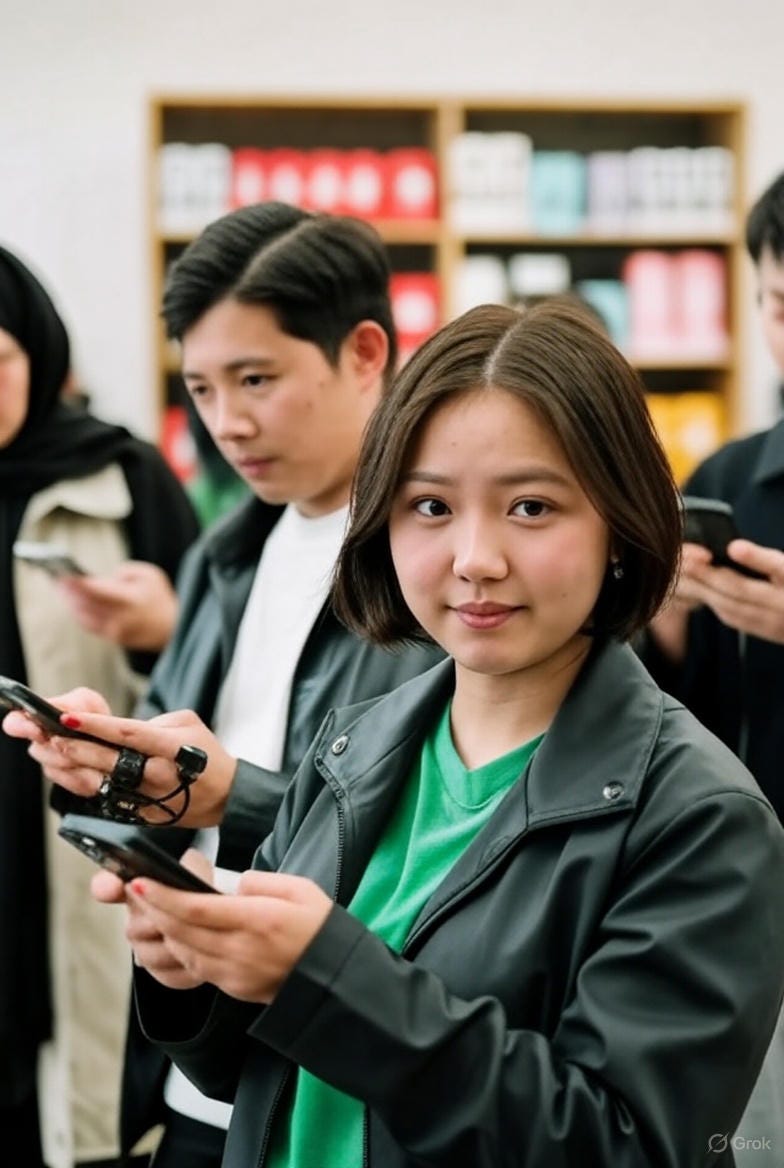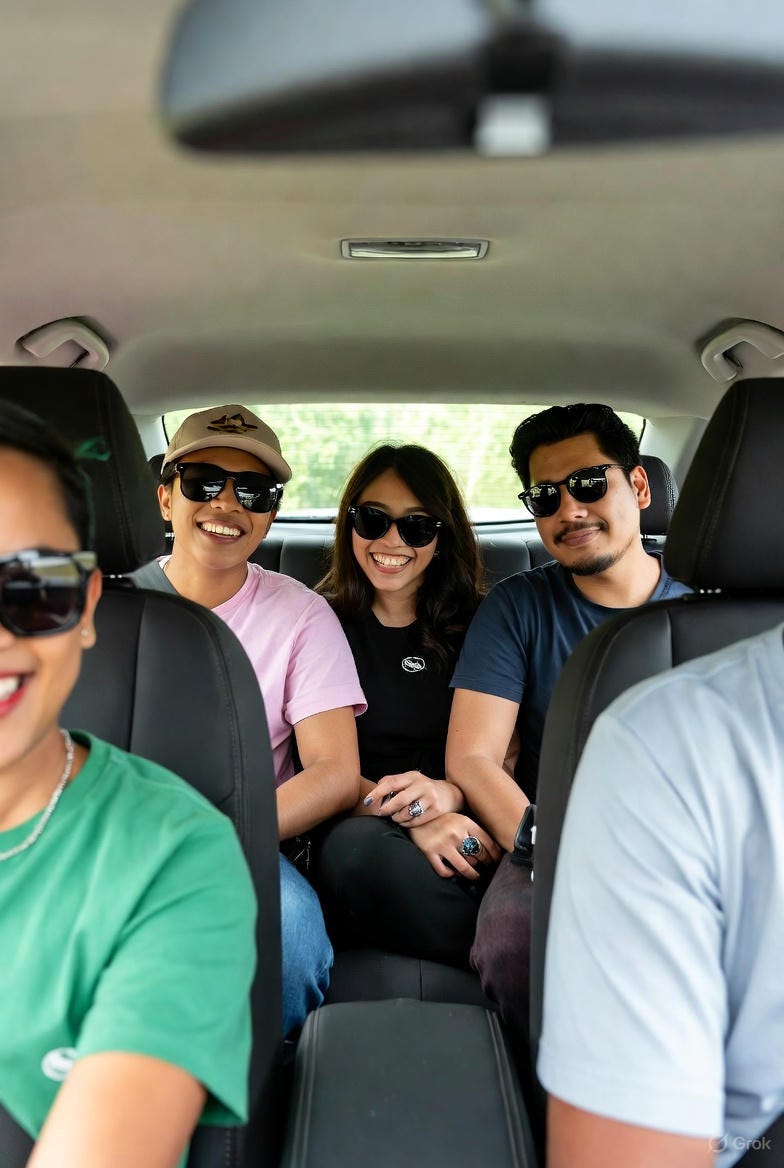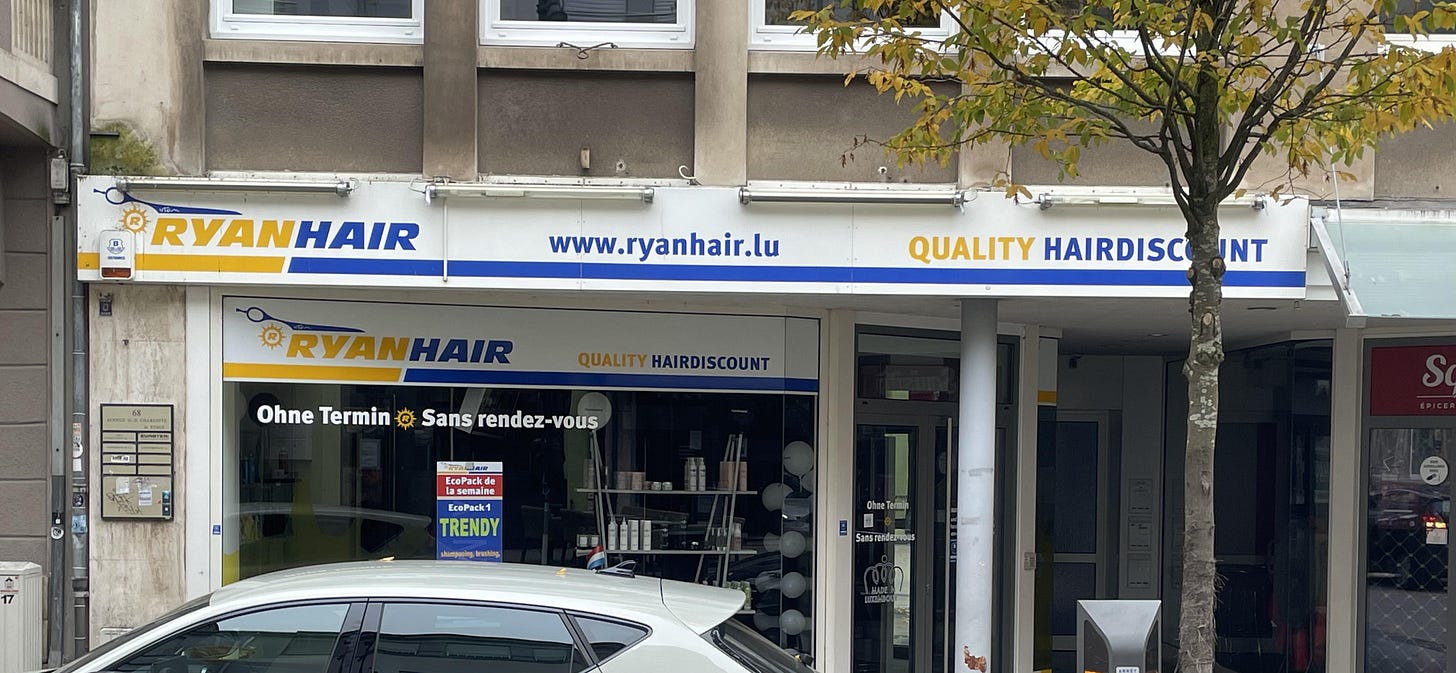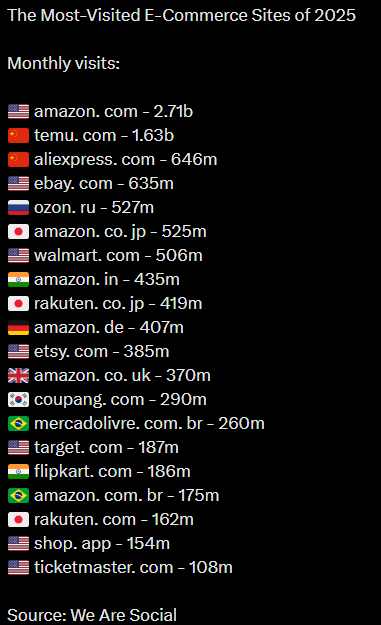Global Digital Marketing & Retail by Alex 114
Inspiration from across the world for retail enthusiasts, e-commerce professionals, marketing lovers and technology fans. Welcome back! I summarized some great links again, I stumbled upon this week.
Goodmorning! Thank you all for reading my newsletter. Soon I will be in BKK again and I will try to make some pictures/videos of retail and horeca concepts for the newsletter, so stay tuned.
🫂Branding = Community: Purpose made people believe in your why. Presence will make them believe in you.
I think I wrote about this earlier after reading the book “Audacious : How Human Companies Win” from Mark Schaeffer.
It’s on how to make a difference in the AI-driven world. One of those things is being a human company.
Now I found this article on “entrepeneur” that brings this a bit more mainstream.
But in 2025, that purpose-driven playbook has lost its magic. Purpose is still necessary, but no longer sufficient.
We’ve entered what I call the Age of Presence — where showing up is the ultimate differentiator.
I think this will be a direction many companies should explore. As the article says:In my opinion this can go hand in hand with digital. It’s very powerful to combine them. Think of:
Physical events powered by digital subscriptions and then re-distributed (re-purposed) online.
Personalised (and this can be AI-driven) invitations to events — for example an “after hours access to a physical store”.
Geo-targeted ads for short-term surprise events.
Instead of only selling products online, try to combine it. If it works for your category: Add subscriptions, (physical and online) training possibilities (often very relevant in B2B) etc.
We are craving texture, contact and humanity. That’s why experiential marketing, networking events and community-driven retreats are exploding across industries — from beauty to tech, from luxury to wellness.
And even in the B2B and tech world, brands are catching on. Anthropic, the AI company behind Claude, recently hosted the Claude Café — a limited-time, community pop-up that drew thousands of visitors. The goal wasn’t to sell software; it was to humanize AI through conversation and coffee.
The question for every leader to be asking themselves right now is simple:
Where can our brand show up in our customers’ real lives?
It might be a dinner.
A retreat.
A repair shop.
A local event.
A safe space for reflection.
In my opinion this can go hand in hand with digital. It’s very powerful to combine this. Think of :
Physical events powered by digital subscribtion and then re-distributed (re-purposed- online in various outings.
Personal (and this can be AI driven (HeyGen f.e.) invitations to events for example an “after hours access to a physical store)
Geo targeted ads for short term surprise events.
Instead of only selling products online, try to combine it. If it works for your category. Add subscribtions, (physical and online training possibilities (works often in B2B) etc.
Create features that can be promoted and are shared by WOM and onboard/nurture from there to physical meets.
💡UX news: AI Chatbots & how to design them properly
AI chatbots can be very convenient, but so far they are still often not. I had a frustrating experience with an AI chatbot of Etihad Airlines the other day for a simple question, took me 10 minutes before I got a human online, the screen was too tiny to really get a clear view of the conversation and most important it was designed so that you not easily see you can also type questions and it are not only pre-selected items you can click.
Vitaly Friedman comes in with great tips on how to design AI driven interfaces.
🚫 Nothing erodes trust more than disguised AI.
🤔 Often users dismiss AI chats almost instinctively.
✅ Users expect an option to “speak to human”.
✅ Be transparent about who users speak to.
✅ Wait for users to end a chat on their terms.
✅ Use separate avatars for AI bot and humans.
✅ Context changes over time: collapse older chats.
✅ Support pinning chats + highlight useful bits.
✅ Let users adjust granularity of reasoning traces.
✅ Allow users to restore iterations of canvases.
✅ Allow users to collapse chat without ending it.
✅ For long, complex tasks → full page screen.
✅ For multi-tasking, co-creation → side panel.
✅ For short, momentary tasks → chat widget.
✅ On mobile, full page AI chat works best.
Nothing erodes trust more than an AI that desperately pretend to be a human. We might not be able to distinguish AI-generated content from human-crafted content, but human conversations differ significantly from AI chats — and there people spot the difference almost immediately:
People talk in quick bursts of text → AI is verbose (by default).
People can respond with 1–2 words → AI respond with sentences.
People never receive unfinished text → AI “streams” output live.
Messages can arrive unprompted → AI responds to prompts.
People have strong opinions → AI is apologetic, overcorrects itself
More tips in Vitaly’s LinkedIN post including more sources:
https://www.linkedin.com/posts/vitalyfriedman_ux-design-share-7354454146973868033-IXhg/
🇮🇳 BlaBlaCar growing rapidly in India via WOM
This is nice! Often forgotten in all marketing plans “WOM/Word of Mouth”. BlaBlaCar (a service I used a few times here in Europe) is now booming in India, with only word of mouth. Also I read more and more (and experienced it also) that digital usage/innovation/acceptation goes much faster now in other parts of the world.
Growth has come largely without marketing or a local team, driven instead by word of mouth, expanding mobile internet access, and the rise of digital payments and car ownership among India’s middle class.
Struggling to gain traction, BlaBlaCar withdrew its local team in 2017. Still, the app remained live — and in 2022, usage began to surge again. Since then, it has skyrocketed from 4.3 million users in 2022 to a projected 20 million this year.
“For us, the center of gravity has shifted away from our initial markets in Western Europe toward places like LatAm [Latin America], Turkey — and increasingly, India,” Brusson told TechCrunch.
🔔Rand Fishkin: listen to the man!
This, I think is the most important part of the talk, so I grabbed a snippet of the full pod and uploaded it here. Basically what Rand says is:
We have entered an era where platforms dominate influence rather than websites.
Many still operate as if the website is the central point people need to visit, instead of treating it as a resource that other platforms can pick up on.
Create influence wherever your audience is, and let them find your website because it’s interesting enough to make them want to.
Details in the full pod.
🇬🇧 Back to the UK: shoppers chose clarity before checkout
Now we move for a moment to the UK as a new report from Meltwater came out. Most important takeout:
The research of Meltwater, mentions that 77.6% of internet users going online to find information and 59.4% researching products and brands, purchase decisions are being shaped well before checkout, upstream in search visibility and the quality of branded content. Make search the trust layer and social the speed layer one can say.
So this aligns with my broader vision on “performance branding” and it is in line with “improving LLM visibility”, as more and more initial product research will take place there.
Details: https://newsbywire.com/uk-shoppers-choose-clarity-before-checkout-77-6-seek-information-and-59-4-research-brands-make-search-the-trust-layer-and-social-the-speed-layer/
Direct link to the research : https://wearesocial.com/wp-content/uploads/2025/02/Digital_2025_United_Kingdom.pdf
😅Time for a laugh: RyanHair
Haha nice brand in Luxembourg. Would they charge a wardrobe fee If you bring a hand bag? 😅
🛂The language selector in international search and discover


After all this is a blog for international e-commerce and marketing, therefore I share this tip from Brodie Clark. Probably known by most international digital marketers, but if not this really helps in international marketing:
Think beyond the “locale” parameter, but use cleaner URL structures.
Brodie highlights the pitfalls of relying on ?locale= parameters in URLs, which can create a mess of duplicate pages and dilute SEO performance, especially for large sites with millions of indexed pages.
Embrace cleaner URL structures, such as subdirectories (e.g., /sk/ for Slovak), paired with proper redirects. This shift enhances crawl efficiency, consolidates link equity, and aligns with best practices for global reach.
Details via Brody: https://x.com/brodieseo/status/1982408323287949338
🇬🇧 Ads of the World: Black Friday at Curry’s the Lowest Ever Prices Choir
I save this one, I am also busy with a Black Friday campaign and have to say this one stands out with the song and lowest ever price guarantee. It’s better then what I currently have, will use it as inspiration.
Details: https://www.adsoftheworld.com/campaigns/lowest-ever-prices-choir
📋Most visited E-commerce websites of 2025 (globally)
We are heading to the end of the year, so it’s time for a list. Lot’s of real huge international platforms, but also very nice to see local champions, like Korea’s coupang, which I happily used in South Korea recently. So local platforms still matter and can make a difference. I am a fan of Temu. Very nice that a global player can be succesful almost everywhere when it cracks the right combination of viral tactics, gamification, ad spend on app installs and cheap prices and of course an incredible assortment. Temu sets expectations around the globe I think.
Warm greetings, connect via: Alex Baar
Or checkout my archive of previous newsletters if you want to read more :
Thanks for reading Crossborder Alex : Global Marketing & E-commerce! Subscribe for free to receive new posts and support my work.







